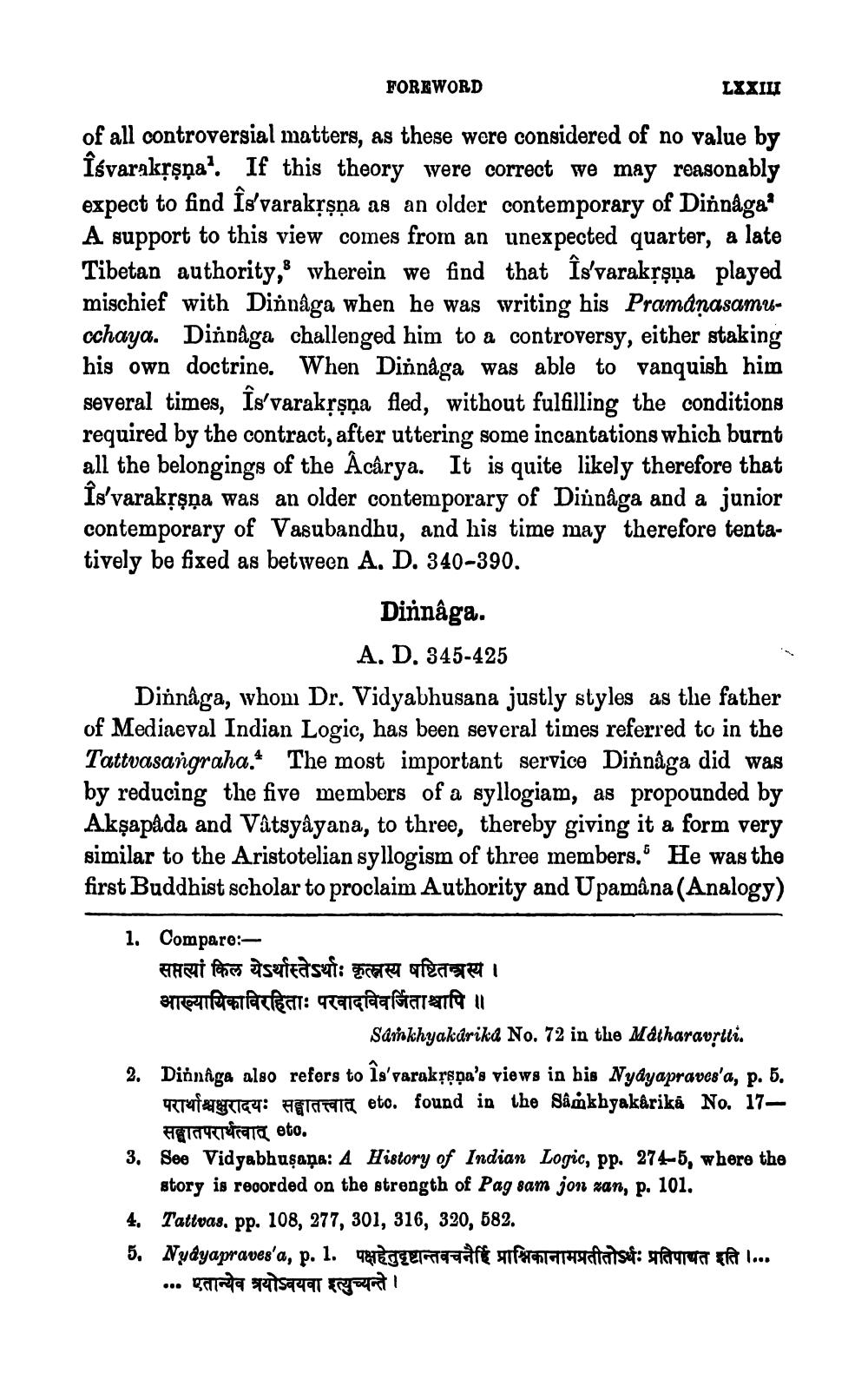________________
FOREWORD
LXXILI
of all controversial matters, as these were considered of no value by Îśvarakļşņa?. If this theory were correct we may reasonably expect to find Is' varakļşņa as an older contemporary of Dinnaga' A support to this view comes from an unexpected quarter, a late Tibetan authority, wherein we find that İs'varakļşņa played mischief with Dinnaga when he was writing his Pramanasamucchaya. Dinnaga challenged him to a controversy, either staking his own doctrine. When Dinnaga was able to vanquish him several times, Is'varakļşņa fled, without fulfilling the conditions required by the contract, after uttering some incantations which burnt all the belongings of the Acârya. It is quite likely therefore that Is'varakļşņa was an older contemporary of Diunaga and a junior contemporary of Vasubandhu, and his time may therefore tentatively be fixed as between A. D. 340-390.
| Dinnaga.
A. D. 345-425 Dinnaga, whom Dr. Vidyabhusana justly styles as the father of Mediaeval Indian Logic, has been several times referred to in the Tattvasangraha. The most important service Dinnaga did was by reducing the five members of a syllogiam, as propounded by Akşapada and Vätsyâyana, to three, thereby giving it a form very similar to the Aristotelian syllogism of three members. He was the first Buddhist scholar to proclaim Authority and Upamâna(Analogy)
1. Comparo:
सप्तत्यां किल येऽर्थास्तेऽर्थाः कृत्स्नस्य षष्टितन्त्रस्य । आख्यायिकाविरहिताः परवादविवर्जिताश्चापि ॥
Sankhyakárika No. 72 in the Matharavrtti. 2. Dinnfga also refers to Îs' varakršpa's views in his Nyayapraves'a, p. 5.
Tufan91794: Aflamata eto. found in the Samkhyakârika No. 17HIKVTGTC oto. 3. Soe Vidyabhuşaņa: A History of Indian Logic, pp. 274-5, where the
story is recorded on the strength of Pag sam jon zan, p. 101. 4. Tattvas. pp. 108, 277, 301, 316, 320, 582. 5. Nyayapraves'a, p. 1. THE EU galit s ahara di atsat: gaman at I...
... galima 4759491 raunti




